If you want to know about the Structure or Permeable concrete or Islamic architecture, please click the link.
Introduction
In general, a structure refers to an object or system that is designed and constructed to support or hold other objects or loads. A structure can be as simple as a single beam or as complex as a multi-story building or a suspension bridge.
Structures can be classified based on their design, material, construction method, and intended use. They can be made from a variety of materials, including concrete, steel, wood, and composite materials. They can also be designed to withstand different types of loads, such as compression, tension, bending, or a combination of these forces.
Structures can be found in a variety of applications, including construction, transportation, engineering, and architecture. The design and construction of structures require specialized knowledge and expertise in engineering, materials science, and construction techniques.
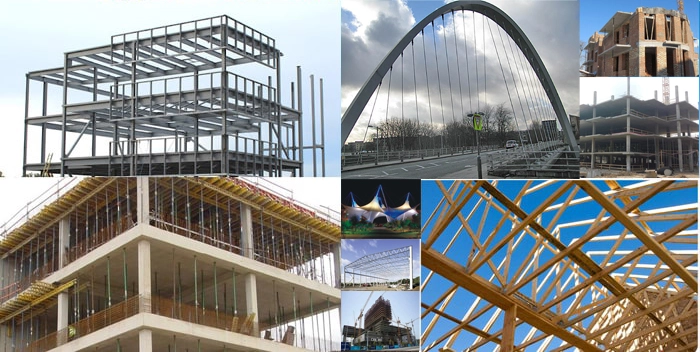
A structure refers to an object or system that is designed and constructed to provide support, stability, and shape to a building, vehicle, or any other physical entity. Structures can be natural or man-made, and they can take on various forms, such as frames, shells, or composites.
Overall, the design and construction of structures play an important role in shaping our built environment and are critical to the safety, functionality, and longevity of our buildings, bridges, roads, and other infrastructure.
Importance of understanding the different types of structures
Understanding the different types of structures is important for several reasons. Firstly, structures play a critical role in the safety and functionality of buildings, bridges, and other physical entities. Choosing the wrong type of structure or using a poorly designed one can lead to collapse, instability, and even fatalities.
Secondly, structures also affect the aesthetics of the objects they support. Different types of structures can give a building or bridge a unique and visually appealing appearance.
Lastly, understanding the different types of structures can help engineers and designers choose the most appropriate and cost-effective solutions for their projects.
1) Types of Structure
There are several types of structures commonly used in construction, including:
i) Load Bearing Structure
Load bearing structure refers to a type of structural system that transfers the weight of a building or structure to its foundation. In this type of structure, the walls, columns, and other elements of the building act as load-bearing elements, carrying the weight of the floors and roof.
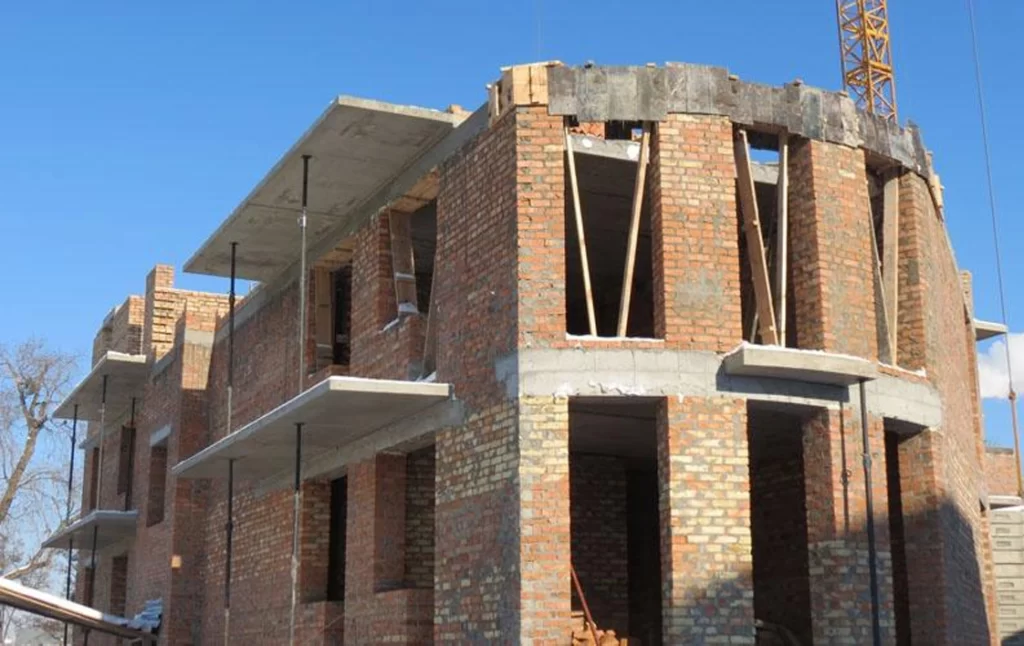
- The structure’s weight is transferred to the walls in the form of roofs and floors supported directly in a load-bearing structure.
- The walls distribute the weight to the underlying soil via wall footings that are adequate and cost-effective for two to four stories.
- Because of its load-bearing function, the wall thickness decreases the carpet area as the number of floors grows.
Advantages of Load Bearing Structure:
- Load bearing structures are generally cost-effective and require less material than other types of structures.
- They are easier and quicker to construct as they don’t require a separate framework or skeleton.
- Load-bearing structures provide stability against earthquakes and other natural disasters by distributing the load evenly across the structure.
Disadvantages of Load Bearing Structure:
- Load bearing structures may limit the flexibility of the building design as they require the walls and columns to be in specific positions to support the weight of the building.
- These structures have a limited height, as the weight of the upper floors increases and can become too heavy for the lower levels to bear.
- Changes to the building design after construction has started may be difficult or impossible to implement due to the structural limitations of load-bearing systems.
Applications in construction
Load bearing structures are commonly used in small to medium-sized buildings, such as houses, low-rise offices, and warehouses. The load-bearing walls are typically made of brick, stone, or concrete, and they provide both structural support and a finished surface for the interior and exterior walls.
Load bearing structures are also used in the construction of historic buildings and monuments, where the use of traditional materials and methods is preferred.
However, for larger and taller buildings, other structural systems such as frame structures, shear wall systems, or composite structures may be preferred due to their ability to handle greater loads and heights.
ii) Truss Structure
Truss structure refers to a type of structural system made up of a series of interconnected triangles, which work together to distribute the weight of a building or structure evenly across its supports. The individual triangles within the truss structure can be made of a variety of materials, such as timber, steel, or reinforced concrete.

Truss is a type of structure with a long span and little depth. A truss comprises slender parts arranged in a triangle pattern; a planner truss has all of its elements in the same plane and is commonly used for bridges.
A space truss is made up of three-dimensional pieces. The truss transforms loads that cause the truss to bend into tension and compression forces. Because of these advantages, the truss uses fewer materials than the beam, and it is made up of narrow and long parts.
Truss can be used to span distances ranging from 9m (30ft) to 122 m. (400ft). Also, in truss analysis, loads are applied at the joints, and members are assumed to be connected at the joints using frictionless pins.
Advantages of Truss Structure:
- Truss structures are incredibly strong and can handle heavy loads with ease, making them ideal for use in bridges, industrial buildings, and other large-scale structures.
- They are highly versatile and can be used to create complex shapes and designs, making them popular in architectural and construction projects where aesthetics are a priority.
- Truss structures are lightweight, which means they can be transported and erected relatively easily, reducing construction time and costs.
Disadvantages of Truss Structure:
- Truss structures can be more expensive than other types of structural systems due to their complex design and the materials required.
- The individual members of the truss structure must be carefully designed and manufactured to ensure that they are capable of withstanding the forces placed upon them.
- Truss structures may require more maintenance than other types of structures due to their exposed members, which can be susceptible to corrosion, wear, and tear.
Applications in construction
Truss structures are commonly used in a variety of construction projects, including bridges, roofs, and industrial buildings. They are also popular in the design of large sports arenas, where their strength and versatility can be used to create unique shapes and designs.
Truss structures are often made of steel or timber, but advances in materials technology have led to the development of lightweight and high-strength materials such as carbon fiber, which can be used to create even more complex and innovative truss structures.
iii) Framed Structure
Framed structure refers to a type of structural system where the load of the building is transferred to the foundation through a skeletal framework made up of columns and beams. The walls of the building are not load-bearing and are instead used as a partition between different rooms.

Frames are structures made up of vertical and horizontal elements. The vertical elements are referred to as columns, and the horizontal members are referred to as beams.
Advantages of Framed Structure:
- Framed structures are highly flexible and can be used to create a wide range of building designs and shapes.
- They are highly resistant to earthquakes and other natural disasters due to their ability to absorb lateral loads.
- Framed structures can be built to a greater height than load-bearing structures, allowing for the construction of high-rise buildings.
- These structures provide greater interior space flexibility, as the walls are not load-bearing and can be moved or modified as required.
Disadvantages of Framed Structure:
- Framed structures can be more expensive to construct than other types of structures, as they require more materials and more complex designs.
- They may require additional fireproofing measures due to the use of combustible materials such as timber or steel.
- The large number of joints in a framed structure can be susceptible to damage from moisture or other environmental factors, requiring regular maintenance.
Applications in construction
Framed structures are commonly used in a wide range of construction projects, including residential and commercial buildings, bridges, and other large-scale structures. They are particularly useful in buildings that require large open spaces, such as airports, shopping malls, and sports arenas.
Framed structures are commonly made of materials such as steel or timber, although other materials such as reinforced concrete can also be used.
The ability of framed structures to handle heavy loads and absorb lateral forces make them a popular choice in seismic zones, where earthquake-resistant structures are required.
iv) Shell Structure
Shell structure refers to a type of structural system where the load of a building or structure is distributed evenly across a curved or flat surface, which is typically thin and lightweight. Shell structures are designed to transfer the load to the supports at the edges of the structure, creating a self-supporting system.

The hell structure is constructed of materials with a limited depth compared to other dimensions; the surface structure can be a tent or an inflated structure; in both circumstances, the surface material acts as a membrane subjected to pure stress.
It can also be formed of reinforced concrete and can take the form of a folded plate, cylinder, or other shapes. With a bit of bending, this structure will withstand load through tension and compression. Shell structures are primarily three types
- Concrete shell structures,
- Lattice or Grid shell structures,
- Membrane structures.
Concrete Shell Structures: Concrete shell structures are typically constructed from reinforced concrete and are characterized by their curved, thin-shell forms. They are often used in roofing applications and can be found in a variety of building types, including sports facilities, exhibition halls, and industrial plants. Concrete shell structures are often preferred for their strength and durability, as well as their ability to span large distances with minimal support.
Lattice or Grid Shell Structures: Lattice or grid shell structures are characterized by their open, latticed framework of interconnected structural elements. They are typically constructed from steel or timber and can take on a variety of shapes and configurations. Lattice or grid shell structures are often used in roofing and bridge applications and are prized for their strength and aesthetic appeal.
Membrane Structures: Membrane structures are characterized by their lightweight, flexible membrane skin, which is typically supported by a network of cables or other tensioning elements. They are often used in roofing and shading applications and can be found in a variety of building types, including sports facilities, exhibition halls, and public spaces. Membrane structures are often preferred for their ability to provide large, uninterrupted spans with minimal support, as well as their ease of assembly and disassembly.
It’s worth noting that shell structures can also be combined with other structural systems to create hybrid structures that take advantage of the benefits of both systems. For example, a concrete shell structure could be combined with a steel frame to create a hybrid structure that is both strong and flexible.
Advantages of Shell Structure:
- Shell structures can be highly efficient and cost-effective, requiring fewer materials and construction time than other types of structures.
- They are highly resistant to external forces such as wind and seismic activity, making them ideal for use in areas with high levels of environmental stress.
- Shell structures can be highly aesthetic and can be used to create visually striking and innovative designs.
Disadvantages of Shell Structure:
- Shell structures can be more difficult to construct than other types of structures, requiring highly skilled labor and specialized equipment.
- The design of shell structures can be highly complex and may require advanced computer modeling and simulation techniques.
- The thin and lightweight nature of shell structures can make them susceptible to damage from impacts or other external forces.
Applications in construction
Shell structures are commonly used in a variety of construction projects, including sports stadiums, museums, and airports. They are also popular in the design of bridges, roofs, and other large-scale structures.
The use of lightweight and high-strength materials such as reinforced concrete, fiberglass, and carbon fiber has enabled the development of more complex and innovative shell structures.
Shell structures are often used in areas with high levels of environmental stress, such as earthquake-prone regions, due to their ability to distribute loads evenly and resist lateral forces.
v) Cables And Arche Structures
Cable and arch structures refer to a type of structural system where the load of a building or structure is distributed across a network of cables or arches.
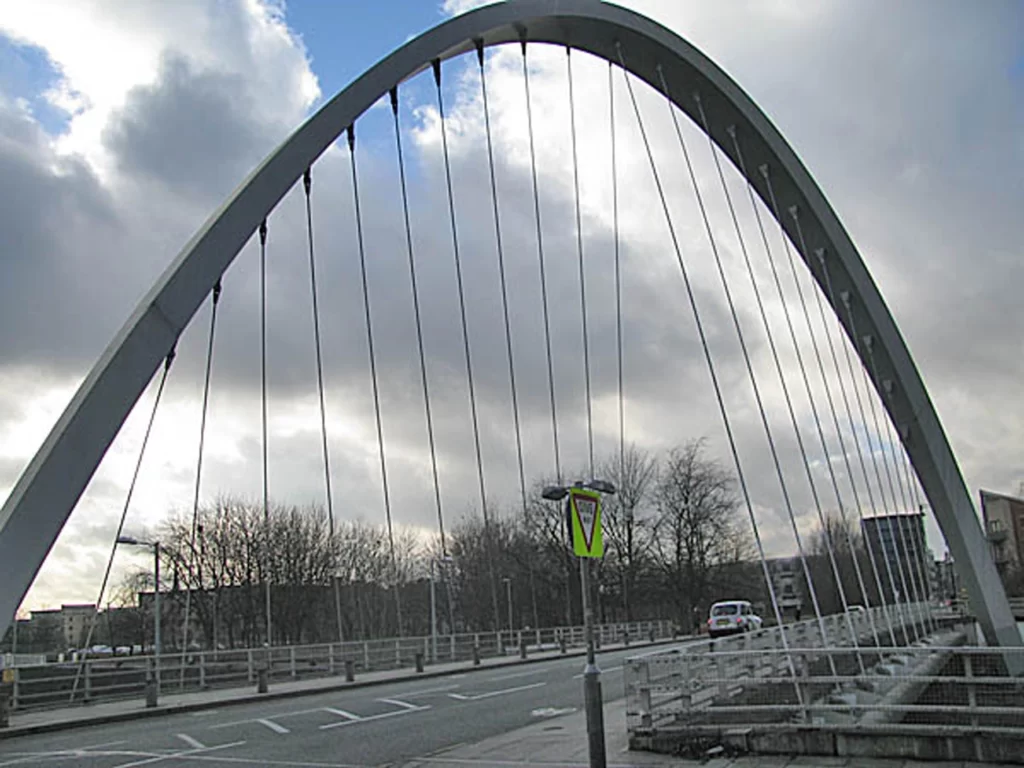
These systems are designed to transfer the load to the supports at the ends of the cables or arches, creating a self-supporting structure.
Cable Structures

Cable structures use a network of cables under tension to support the weight of the building or structure. The cables are typically made of high-strength steel or other high-tensile materials and are anchored at the ends of the structure.
Advantages of Cable Structures:
- Cable structures are highly versatile and can be used to create a wide range of building designs and shapes.
- They are highly resistant to wind and seismic activity, making them ideal for use in areas with high levels of environmental stress.
- Cable structures can be highly aesthetic and can be used to create visually striking and innovative designs.
Disadvantages of Cable Structures:
- Cable structures can be more expensive to construct than other types of structures, as they require more materials and specialized equipment.
- They may require additional maintenance due to the exposure of the cables to environmental factors such as corrosion and wear.
Applications in construction:
Cable structures are commonly used in a variety of construction projects, including bridges, roofs, and other large-scale structures. They are also popular in the design of sports stadiums, exhibition halls, and other public buildings.
Arch Structures
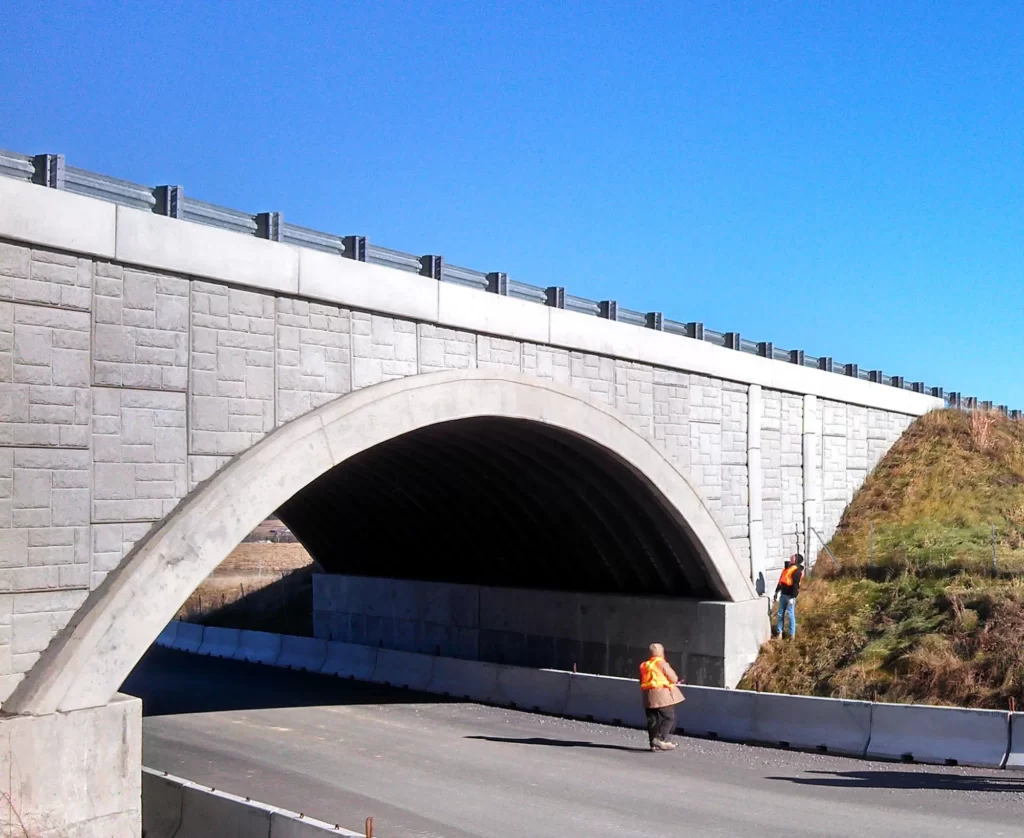
Arch structures use a series of arches to support the weight of the building or structure. The arches can be made of a variety of materials, including concrete, steel, or timber, and are typically designed to resist compressive loads.
Advantages of Arch Structures:
- Arch structures are highly efficient and can handle large loads with ease, making them ideal for use in bridges and other large-scale structures.
- They are highly resistant to wind and seismic activity, making them ideal for use in areas with high levels of environmental stress.
- Arch structures can be highly aesthetic and can be used to create visually striking and innovative designs.
Disadvantages of Arch Structures:
- Arch structures can be more expensive to construct than other types of structures, as they require more materials and specialized equipment.
- They may require additional maintenance due to the exposure of the arches to environmental factors such as corrosion and wear.
Applications in construction:
Arch structures are commonly used in a variety of construction projects, including bridges, tunnels, and other large-scale structures. They are also popular in the design of sports stadiums, exhibition halls, and other public buildings.
The use of high-strength materials such as steel and reinforced concrete has enabled the development of more complex and innovative arch structures.
vi) Composite Structure
Composite structures are a type of structural system that combines two or more materials to create a structure with superior properties. These structures can be designed to be stronger, lighter, and more durable than structures made from a single material.
A composite structure is made up of a load-bearing structure and a frame structure. Exterior walls can be load-bearing structures, while internal column and beam constructions can support floors and ceilings.
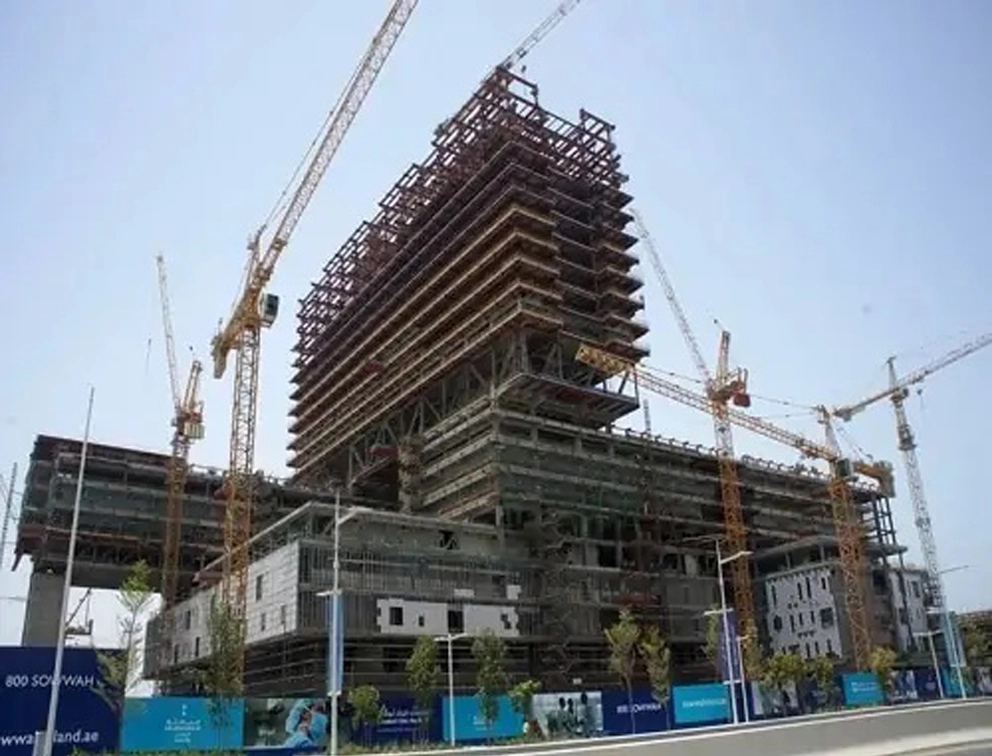
Composite structures are made by combining two or more materials with different physical and chemical properties. The most commonly used materials in composite structures are fiberglass, carbon fiber, and epoxy resins. These materials are combined in layers or panels to create a structure that is stronger and lighter than a structure made from a single material.
Advantages of Composite Structures:
- Composite structures are lightweight and have a high strength-to-weight ratio, making them ideal for applications where weight is a critical factor, such as aerospace or automotive industries.
- They are highly durable and resistant to corrosion, making them ideal for use in harsh environments.
- Composite structures can be designed to be highly flexible, which allows for greater design freedom and the ability to create complex shapes and structures.
Disadvantages of Composite Structures:
- Composite structures can be more expensive to manufacture than other types of structures, as they require specialized manufacturing techniques and materials.
- They can be more difficult to repair than traditional structures, as they require specialized knowledge and materials.
- Composite structures can be more susceptible to delamination or other forms of damage if not properly maintained.
Applications in Construction
Composite structures are commonly used in a variety of construction projects, particularly in applications where strength and durability are critical factors. Examples of applications include bridges, sports stadiums, and high-rise buildings.
Composite materials are also frequently used in the construction of wind turbine blades and in the aerospace industry for the manufacture of aircraft parts.
vii) Tension Structures
Tension structures are a type of structural system that rely on tensioned cables or membranes to provide support and stability. These structures are typically lightweight and flexible, and can be used to create large spans without the need for supporting columns or beams.
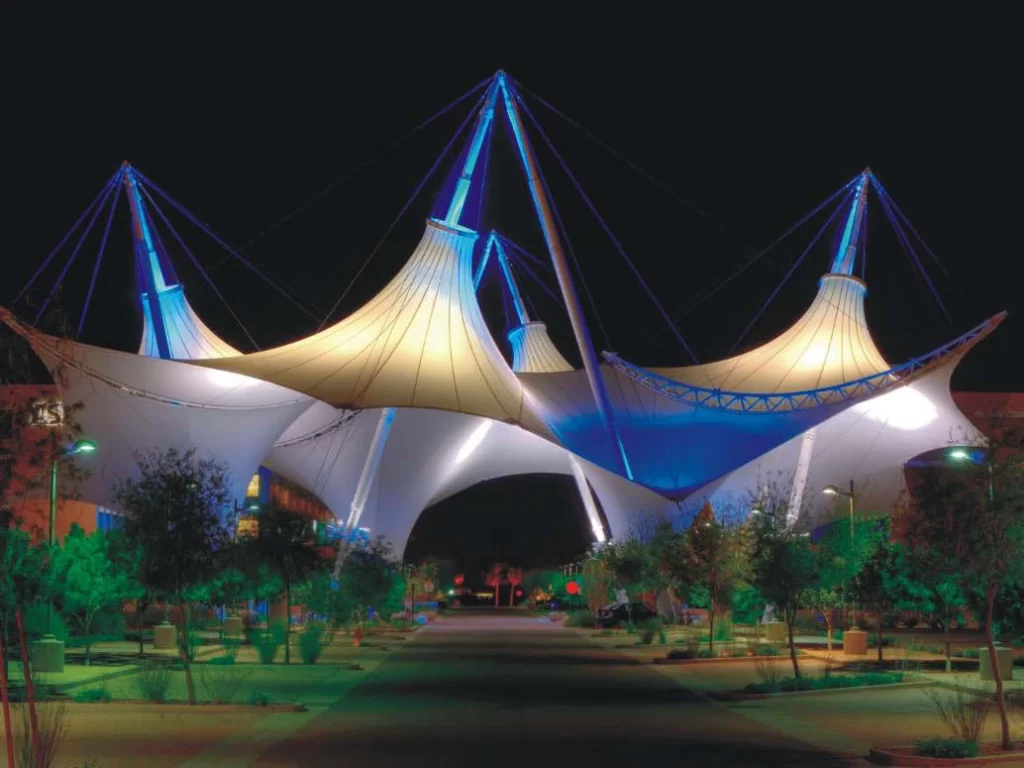
Tension structures are designed to distribute loads through tensioned cables or membranes, rather than through compressive or bending forces.
These structures are typically made from materials such as steel cables, fabric membranes, or high-strength polymers. The tension in the cables or membranes helps to maintain the shape of the structure and support any loads applied to it.
Advantages of Tension Structures:
- Tension structures can be highly flexible and adaptable, making them ideal for use in a variety of applications.
- They are typically lightweight and require less material than other types of structures, making them more cost-effective to construct.
- Tension structures can be designed to be aesthetically pleasing, with the ability to create unique and visually striking shapes.
Disadvantages of Tension Structures:
- Tension structures require specialized engineering and design expertise to ensure that they are structurally sound and capable of supporting the loads they are designed for.
- They can be more susceptible to damage from wind, rain, and other environmental factors, and may require more maintenance than other types of structures.
- Tension structures may not be suitable for all applications, particularly those that require high levels of stiffness or rigidity.
Applications in Construction
Tension structures are commonly used in a variety of construction projects, particularly in applications where large spans or open spaces are required. Examples of applications include sports stadiums, concert venues, exhibition halls, and airport terminals. Tension structures are also frequently used in the design of canopies, awnings, and other shading structures.
viii) Pre-Engineered Structure
Pre-engineered structures, also known as pre-fabricated or pre-manufactured structures, are a type of structural system that are designed and manufactured off-site, and then assembled on-site. These structures are typically made from a combination of steel and other materials, and are designed to be easily and quickly assembled.

The ideal building structure is sometimes pre-engineered because it goes together quickly and allows you to start using it sooner than you thought possible.
Often, you can design the building to your requirements, and then the sections are built and assembled before sending them to the construction site.
The benefits of pre-engineered buildings are that they can be put together quickly, strong, and easily customizable. Unfortunately, they are very costly than other building types, and your design must be square or rectangular.
Advantages of Pre-Engineered Structures:
- Pre-engineered structures are typically faster and more cost-effective to construct than traditional structures, as much of the manufacturing and assembly can be done off-site.
- They are often highly customizable, with a wide range of design options available to meet specific requirements.
- Pre-engineered structures are typically made from high-quality materials, such as steel, which offer durability and longevity.
Disadvantages of Pre-Engineered Structures:
- Pre-engineered structures may not be suitable for all applications, particularly those that require unique or custom designs.
- They may not be suitable for projects that require a high level of architectural detail or complexity.
- Pre-engineered structures may have limitations in terms of size and configuration, depending on the manufacturer and design.
Applications in Construction
Pre-engineered structures are commonly used in a variety of construction projects, particularly in applications where speed and cost-effectiveness are critical factors.
Examples of applications include warehouses, factories, and storage facilities. They are also frequently used in the construction of retail stores, office buildings, and other commercial structures. Pre-engineered structures can also be used in residential construction, particularly for modular or prefabricated housing.
ix) Mass Structures
Mass structures are a type of structural system that rely on their sheer weight and mass to resist forces and maintain stability. These structures are typically made from heavy materials such as stone, concrete, or adobe, and often feature thick walls and foundations.
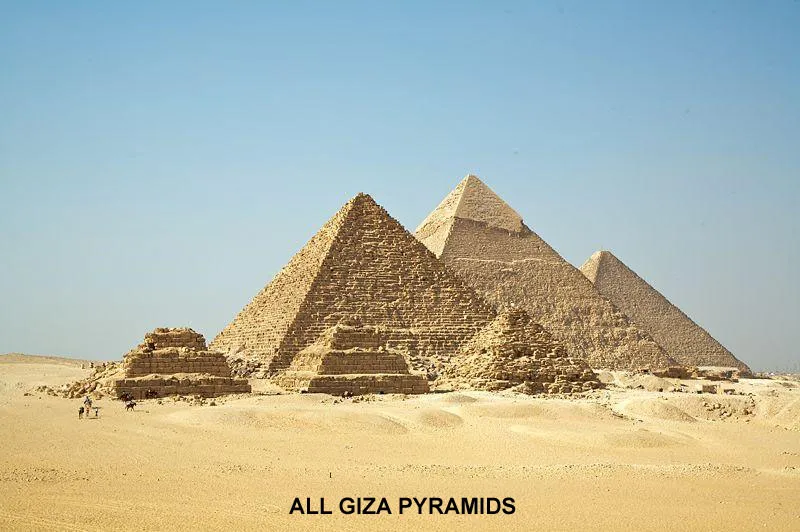
Mass structures are designed to resist forces such as wind and seismic activity by relying on their mass and inertia to counteract external forces. This type of structural system is commonly used in buildings such as fortresses, temples, and other historic structures.
Solid structures that rely on their weight to resist loads are known as mass structures. Sandcastles, dams, pyramids, and other artificial structures are examples of artificial structures, while coral reefs, mountains, and other natural mass structures are examples of natural mass structures.
Advantages of Mass Structures:
- Mass structures can be highly durable and long-lasting, with some structures remaining standing for thousands of years.
- They are highly resistant to wind and seismic activity, making them ideal for use in areas with high levels of environmental stress.
- Mass structures can be highly aesthetic and can be used to create visually striking and impressive designs.
Disadvantages of Mass Structures:
- Mass structures can be more expensive to construct than other types of structures, as they require more materials and labor-intensive construction methods.
- They may have limited flexibility in design, as they rely on the use of heavy materials and thick walls that can be difficult to modify.
Applications in construction
Mass structures are commonly used in a variety of construction projects, particularly in areas with high levels of seismic activity or extreme weather conditions.
They are also popular in the design of historic buildings and cultural landmarks, where their durability and longevity are highly valued. Examples of mass structures include the Great Pyramids of Giza, Machu Picchu, and the Great Wall of China.
2) Conclusion
In conclusion, structures are an essential part of our built environment, providing support and protection for a variety of applications. Understanding the different types of structures and their advantages and disadvantages is crucial in designing and constructing safe, functional, and long-lasting buildings, bridges, and other infrastructure.
From load-bearing structures like frames and trusses to tension structures like cables and arches, and from mass structures like masonry to shell structures like concrete shells and membrane structures, each type of structure has its own unique characteristics and applications.
By combining different types of structures and materials, engineers and architects can create innovative and efficient designs that push the boundaries of what is possible. As technology and materials science continue to evolve, the possibilities for structure design and construction will only continue to expand, creating new opportunities for creativity and innovation in the field of architecture and engineering.
Great blog! Very informative and well-written.! Discover JSRGroup SunCity, the leading real estate company in Telangana and Andhra Pradesh. Explore our Ventures and locate your perfect house today.real estate blogs in hyderabad